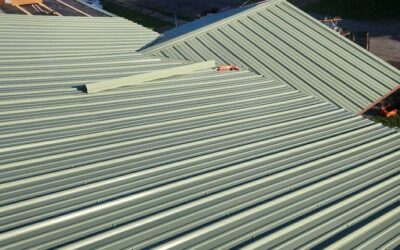A chimney cap is more than just a decorative feature atop your chimney; it’s a critical component that protects your home from weather damage, animal intrusion, and fire hazards. Whether you’re considering installing a new cap, replacing an old one, or repairing an existing cap, understanding the nuances of chimney caps is essential. This comprehensive guide will walk you through the importance of chimney caps, the installation process, signs that indicate the need for replacement, and repair tips to ensure your chimney remains safe and functional.
🛡️ Why Chimney Caps Are Essential
Chimney caps serve several vital functions that contribute to the safety and longevity of your home:
- Moisture Prevention: Caps prevent rain, snow, and sleet from entering the chimney, which can cause internal damage and promote mold growth.
- Animal Deterrence: They keep birds, squirrels, and other animals from nesting inside the chimney, which can block airflow and pose fire risks.
- Debris Blockage: Caps stop leaves, twigs, and other debris from clogging the chimney flue, ensuring proper ventilation.
- Spark Arrestor: They act as a barrier to prevent sparks and embers from escaping the chimney and potentially igniting the roof or surrounding areas.
- Downdraft Prevention: Caps help prevent downdrafts, which can bring smoke and soot back into the home.
🏗️ Types of Chimney Caps
Selecting the right chimney cap depends on your chimney’s design and your specific needs:
- Single-Flue Caps: Designed for chimneys with one flue, these caps are straightforward to install and commonly used in residential settings.
- Multi-Flue Caps: Ideal for chimneys with multiple flues, these caps cover the entire chimney crown and provide uniform protection.
- Top-Mount Caps: These attach directly to the chimney crown and can accommodate single or multiple flues.
- Band-Around-Brick Caps: These wrap around the chimney’s exterior and are secured with adjustable bands, suitable for chimneys without protruding flue tiles.
- Draft-Increasing Caps: Designed to improve draft in chimneys with poor airflow, these caps use aerodynamic designs to enhance smoke expulsion.
- Custom Caps: Tailored to fit unique chimney sizes and shapes, custom caps ensure a perfect fit and optimal protection.
🛠️ Installing a Chimney Cap: Step-by-Step Guide
Tools and Materials Needed:
- Chimney cap (appropriate type and size)
- Measuring tape(This Old House)
- Screwdriver or drill(This Old House)
- Masonry screws or appropriate fasteners(Home Improvement Stack Exchange)
- Caulk gun and high-temperature sealant
- Ladder with stabilizer(This Old House)
- Safety harness and gloves(This Old House)
Installation Steps:
- Measure the Flue: Determine the dimensions of your chimney flue to select the correct cap size.
- Choose the Right Cap: Based on your measurements and chimney type, select a cap that fits securely.
- Prepare the Area: Clean the chimney crown and flue opening to ensure a smooth installation surface.
- Position the Cap: Place the cap over the flue, ensuring it sits evenly and aligns with the flue’s center.(HY-C)
- Secure the Cap: Use masonry screws or the provided fasteners to attach the cap firmly.
- Seal the Edges: Apply high-temperature sealant around the base of the cap to prevent moisture intrusion.
- Inspect the Installation: Ensure the cap is stable and there are no gaps or loose fittings.
For a visual demonstration, consider watching this instructional video:
🔄 When to Replace Your Chimney Cap
Regular inspection of your chimney cap is crucial. Here are signs that indicate it’s time for a replacement:
- Visible Damage: Cracks, rust, or missing parts can compromise the cap’s effectiveness.
- Corrosion: Rust indicates that the cap’s material is deteriorating, which can lead to failure.
- Loose Fit: If the cap is no longer securely attached, it may allow water or animals to enter.
- Missing Cap: If your chimney lacks a cap, it’s essential to install one promptly to prevent damage.
Neglecting these signs can lead to costly repairs and safety hazards.
🧰 Repairing a Chimney Cap
Minor issues with chimney caps can often be repaired without full replacement:
- Tightening Loose Screws: Regularly check and tighten any loose fasteners to maintain a secure fit.
- Applying Sealant: Use high-temperature sealant to fix small cracks or gaps that allow moisture in.
- Removing Rust: For metal caps, gently sand away rust spots and apply a rust-resistant paint to prevent further corrosion.
- Replacing Mesh Screens: If the mesh is damaged, it can often be replaced separately without changing the entire cap.
For comprehensive repairs, especially those involving structural damage, it’s advisable to consult a professional.
🧱 Maintaining Your Chimney Cap
Regular maintenance extends the life of your chimney cap and ensures optimal performance:
- Annual Inspections: Check for signs of wear, corrosion, or damage at least once a year.
- Cleaning: Remove debris, such as leaves or nests, that may accumulate on or around the cap.
- Monitor for Animal Activity: Ensure that animals haven’t breached the cap, which can lead to blockages or damage.
- Check Sealant Integrity: Inspect the sealant for cracks or deterioration and reapply as necessary.
Consistent maintenance prevents minor issues from escalating into significant problems.
🏠 Conclusion
Chimney caps are a vital component in safeguarding your home from environmental elements, pests, and fire hazards. Proper installation, timely replacements, and regular maintenance are essential to ensure your chimney functions safely and efficiently. By understanding the importance of chimney caps and adhering to best practices, you can protect your home and enjoy the warmth of your fireplace with peace of mind.
 (440) 307-2060
(440) 307-2060

